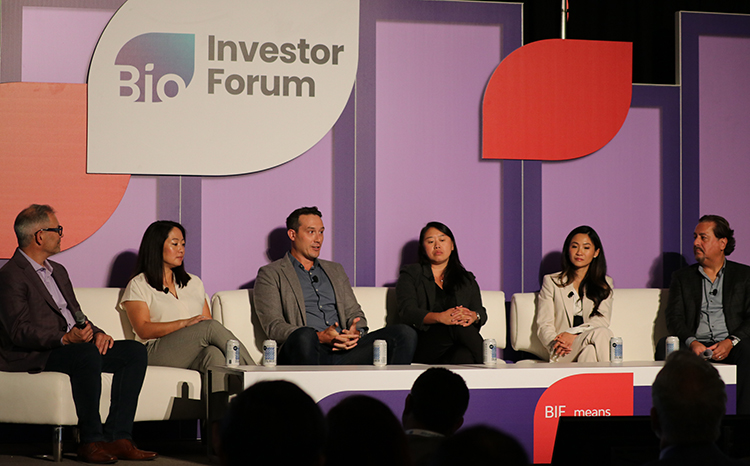Biotech firms weighing an initial public offering (IPO) must consider timing, interest in their product, the macro environment—and whether they really need all the headaches, according to an Oct. 16 BIO Investor Forum panel.
“Why do you want to go public? It’s not a super-fun experience,” said Colin Walsh, Managing Director, Growth Equity at Goldman Sachs. “Being public has a whole different set of requirements and expectations which are pretty disconnected from biotech writ large,” including low investor tolerance for the setbacks that are common during drug development.
Of course, the investment gained from an IPO can be essential to achieving the ultimate goal: bringing a new drug to market, said Walsh and other panelists joining the session in San Francisco entitled, “Market Outlook: Is the IPO Window Opening Wider and What to Watch?”
For those ready for the experience, the panelists shared advice and perspectives that help to put the challenge of an IPO in context, starting with the current state of the market.
“Now that the Fed has cut rates, I think there is real opportunity,” according to moderator Jakob Dupont, Executive Partner, Sofinnova Investments.
Several panelists used the phrase “cautious optimism” to describe the current appetite for biotech IPOs, saying investor interest appears to be returning slowly after a couple of bad years.
“In general, the market is pretty challenging,” cautioned Elaine Cheung, Chief Business Officer of Moonwalk Biosciences. “Everyone wants to see the other side of the elections.”
Bio.News interviewed Jakob Dupont of Sofinnova Investments at the 2024 BIO Investor Forum in San Francisco.
Timing and therapeutic areas
Beyond the macro environment, there is also the micro question of when a firm is ready to go public. Panelists said clinical trial data confirming the value of a product is essential for firms hoping to get a good stock price from their IPO.
“If you don’t have data that’s coming in the next 6-12 months, it’s really a punishing market,” Cheung said.
Emily Park, MD, Principal at DCVC Bio, agreed.
“I think clinical stage for sure, and the closer you are to [Food and Drug Administration] approval, the higher your probability of success,” she said.
Park added that it can help to have a good pipeline of drugs in development in case something goes wrong with a firm’s leading drug candidate. However, Carolyn Ng, Partner and Managing Director at TPG Life Sciences Innovations, argued that drugs in the development pipeline are usually too far from a payoff to sway investor decisions.
Another factor determining the success of an IPO is the type of product a firm is offering. Drugs targeting the therapeutic areas of obesity, oncology, autoimmune conditions, and neurology seem to be attracting a lot of interest, while antibiotics, vaccines, and women’s health are underserved areas, according to Ng.
Drugs targeting an unmet need can stand out, according to Walsh. “Chasing the same stuff as everyone else is very challenging,” he said.
Decisions to make
Once they’ve determined they’re ready to go public, a company has more decisions to make, including when to involve a chief financial officer.
After noting the importance of his position, Peter Garcia, Chief Financial Officer of ALX Oncology, added, “I don’t think you need to hire them that early, actually. I’ve known CEOs who wanted to hire me as CFO for their series B (funding round).” But in fact, series B is kind of early to make such a hire, and a full or part-time CFO is generally only needed for an IPO. However, they should be brought in at least 6-12 months before the IPO launch.
Another important decision is whether it makes sense to consider a parallel track of seeking investors through an IPO while at the same time soliciting a merger with a larger biopharma.
This tactic worked for Carmot, the developer of an obesity drug, which convinced Roche to buy them out by exploring the possibility of raising funds through an IPO rather than M&A, according to Cheung.
But any problems with a merger can hurt a company’s reputation before their IPO, Walsh warned. “Investors often know when that’s happening. If you don’t get an M&A, there’s a downside,” he said.
Ng stressed that M&A is different from an IPO. She said the M&A event is usually the time when investors in an IPO have a chance for a big payoff. Walsh agreed.
“It’s M&A. Every public investor is playing for M&A,” he said.




